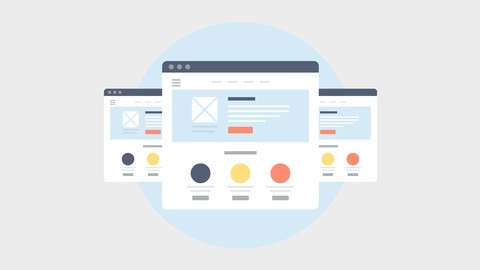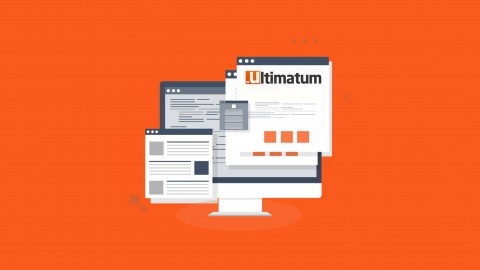WordPress themes are the foundation of your website’s design and functionality.
They control the look and feel of your site, how your content is displayed, and even the features available to your visitors.
By learning how to create and customize WordPress themes, you can unlock a world of possibilities, crafting unique and engaging online experiences tailored to your specific needs.
Whether you’re a budding web developer, a business owner, or a blogger seeking to elevate your online presence, mastering WordPress themes is an invaluable skill.
Finding the perfect WordPress themes course on Udemy can be a challenge, with a vast array of options available.
You want a course that’s comprehensive, engaging, and taught by experienced instructors who can guide you through the intricacies of theme development.
You’re looking for a course that balances theory with practical application, providing hands-on projects and real-world examples to solidify your understanding.
Based on our extensive research and analysis, we believe Complete WordPress Developer Course 2023 - Plugins & Themes is the best overall WordPress themes course on Udemy.
This comprehensive course covers everything from basic PHP and JavaScript to building complex themes and plugins.
You’ll learn how to customize your website’s look and feel, work with databases, create custom post types, and even manage plugin settings.
It’s a fantastic choice for both beginners and those with some prior experience in web development.
While Complete WordPress Developer Course 2023 - Plugins & Themes stands out as our top pick, there are other excellent WordPress themes courses available on Udemy, each catering to specific learning styles and goals.
Whether you’re interested in creating child themes, converting HTML templates, or building themes with minimal coding, we’ve got you covered.
Keep reading to discover our curated list of recommendations and find the perfect course to embark on your WordPress theme development journey.
Complete WordPress Developer Course 2023 - Plugins & Themes
This WordPress plugins course takes you from the basics of web development with PHP and JavaScript to building complex WordPress plugins and themes.
You begin by understanding variables, functions, and loops in PHP, laying the foundation for WordPress development.
Then, you’ll dive into theme development, learning to customize your website’s look and feel using global styles, managing assets effectively with Git and GitHub.
You’ll explore the power of JavaScript and React to create interactive elements for your WordPress site.
You’ll learn to build custom blocks using React components, adding dynamic and engaging features.
The course also covers the implementation of server-side rendering and REST APIs, allowing you to manage and display data from your WordPress backend to your website’s frontend smoothly.
This course teaches you to interact with your WordPress database directly using SQL and tools like Adminer.
You’ll gain a deep understanding of custom post types and taxonomies, extending the core functionality of WordPress to meet your specific needs.
You’ll be able to craft custom admin pages, manage plugin settings, and seamlessly integrate with WordPress APIs.
You will even master the command line and package managers like NPM and Webpack.
Learn To Create WordPress Themes By Building 10 Projects
This course teaches you how to build WordPress themes by making 10 different websites.
You start with the basics, like setting up WordPress and learning the code you need to get started.
Then you make a simple theme so you understand the building blocks of a website.
You quickly level up by making more advanced themes.
You learn about templates, navigation menus, and how to make your website look good using CSS.
You also learn how to make your website work well, adding things like search bars and comment sections.
Each project focuses on a different type of website, so you learn something new with every build.
You can build a photo gallery using JavaScript or an online store using the Foundation framework.
You even learn how to build a business website with a special tool called the WordPress Customizer.
Don’t worry if some of these words sound unfamiliar.
The course teaches you about things like PHP, MySQL, and jQuery so you can build awesome websites.
You also learn about Bootstrap, a tool that helps you design websites that look great on phones and computers.
The Complete Guide to Building Premium WordPress Themes
This course takes you on a journey from setting up your local server and installing WordPress to mastering advanced WordPress theme development.
You’ll begin by understanding the core building blocks – template files, template tags, and the all-important WordPress loop.
You’ll move on to mastering WordPress coding, including functions, validation, sanitization, and techniques for making your themes accessible to international users.
You’ll learn how to work with tools like NPM and Gulp to automate tasks, optimize your workflow, and build clean, maintainable code.
The course guides you in using ITCSS architecture for efficient stylesheet organization, compressing images for faster loading times, and bundling JavaScript plugins like a pro.
You’ll be able to create sleek navigation menus, including mega menus, for enhanced user experience and learn how to use the Customizer API, giving users control over their website’s design.
You’ll delve into security by learning about user roles, capabilities, and nonces.
You’ll discover the power of metadata and custom fields, and how to bundle plugins with your theme using TGMPA.
The course explores creating custom post types and taxonomies to structure unique content types.
You’ll also explore WordPress’s new editor, Gutenberg, and gain the ability to build themes compatible with this powerful tool.
The course even covers creating custom shortcodes and image sliders, teaching you how to add that extra layer of polish to your themes.
Finally, you’ll ensure your themes meet the highest standards by using WordPress’s built-in quality assurance tool, Theme Check.
Convert HTML5 One Page Templates Into WordPress Themes
This course teaches you how to transform a simple HTML template into a dynamic WordPress website.
You begin by learning how to set up WordPress from scratch.
You then dive into the core of the course, converting your HTML code into a functional WordPress theme.
You’ll discover the correct methods for incorporating stylesheets and Javascript, which are essential for creating a visually appealing and interactive website.
You then learn how to use widgets to add interactive elements and functionalities to your website.
The course guides you through the process of creating user-friendly menus to help visitors navigate your website effortlessly.
You then master the WordPress loop, a powerful tool that allows you to control how your content, like posts, pages, and images, appears on your site.
This course also provides you with valuable resources and answers to frequently asked questions, ensuring a smooth learning experience.
You even get a bonus lecture to further enhance your WordPress theme development skills.
Building WordPress Themes: The Step-by-Step Guide
This course starts you off by learning PHP, the language behind WordPress themes.
You’ll discover variables, arrays, operators, and how to control what your code does using conditional statements and loops.
This strong PHP base is super important for really getting how WordPress themes work.
You’ll then create a local development environment using Local by Flywheel, a handy tool that lets you build and test themes without messing up your live website.
You’ll dive into the world of WordPress, exploring its core files and understanding the template hierarchy, which decides how your website content is displayed.
Get ready to put your PHP skills to the test as you learn to transform your HTML templates into WordPress-friendly ones, copy your CSS, and build a custom homepage using the CMB2 plugin, a powerful tool for adding cool features to your website.
The course doesn’t just stop at the basics.
You’ll also learn about important WordPress development concepts like hooks (Actions and Filters), which let you modify how WordPress behaves.
You’ll become an expert in data validation, making sure your theme handles user information safely.
Plus, you’ll discover internationalization and localization, which means you can make your themes work for people all over the world.
To top it off, you’ll create a custom food menu plugin from scratch.
This project lets you flex your creative muscles while learning how to create custom post types, taxonomies, and templates, giving you a taste of real-world WordPress development.
Modify Your WordPress Theme the RIGHT Way Using Child Themes
This course begins by explaining the importance of child themes in WordPress.
You’ll discover how child themes safeguard your website from update issues and learn the tools you’ll be using, like Notepad++ and Cyberduck.
The course guides you through creating a child theme folder, building a stylesheet, and customizing it with your information.
You will learn how to activate, test, and even give your theme a polished look with a custom screenshot.
The course also teaches you FTP basics, showing you how to use Cyberduck to connect to web servers, upload and download files.
You will discover how to use FTP clients like Cyberduck with text editors like Notepad++ or TextWrangler to directly edit files on your server.
The course also teaches practical techniques like checking file modification times on your server for increased efficiency.
Create WordPress Theme with Ultimatum 2.5 (Almost No Coding)
This WordPress themes course teaches you how to build your own custom WordPress themes without needing to be a coding whiz.
You begin by learning the basics of WordPress, including why it’s so widely used and how to install it directly from WordPress.org.
You then delve into the Ultimatum framework, understanding its installation process, pricing structure, and how to create your first basic template.
You then move on to the heart of theme building: layouts.
You discover how to craft both full layouts, which dictate the overall structure of your pages, and partial layouts, which are reusable components you can insert throughout your theme.
You’ll learn how to add rows, incorporate the default WordPress loop (which dynamically displays your blog posts), and even populate your site with sample content to see your design come to life.
To give your theme a professional polish, you explore how to integrate featured images, leverage the stylish templates from Bootswatch, and even write your own custom CSS for those unique design touches.
You’ll also master the art of implementing sliders to display dynamic, eye-catching content on your site.
You’ll even learn advanced techniques like crafting unique homepages and individual pages, and you’ll unlock the power of shortcodes to easily insert pre-designed elements like buttons and galleries.
As a bonus, you’ll get to grips with enhancing your theme further by incorporating Google Fonts and striking hero images.
Step-By-Step Child Themes for New & Existing WordPress Sites
This WordPress themes course teaches you how to personalize your WordPress website without changing the original theme’s code.
You learn what child themes are and why they are important for safe customization.
You’ll then discover how to create a child theme from start to finish, including setting it up and activating it on your WordPress website.
You will learn how to transport the style from the main theme to your child theme, giving you control over your website’s appearance.
The course shows you how to customize your child theme by adding new features and changing existing ones.
You will learn how to change the design of your website further by overriding theme files.
The course also covers more advanced topics like creating a child theme for a website you already have.
This course provides practical examples, like downloadable child themes for the Twenty Sixteen and DIVI themes.
These examples help you understand the concepts and apply them to your own website.
You also get access to additional resources to help you continue learning after you finish the course.








